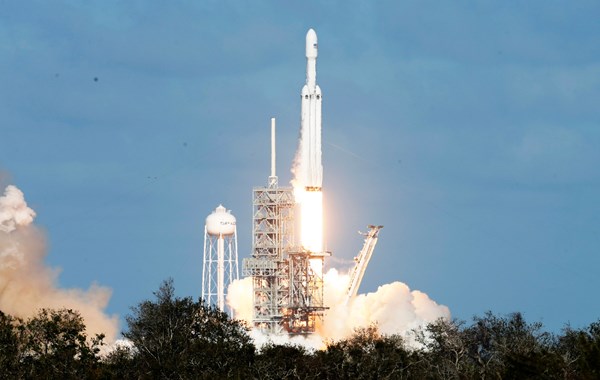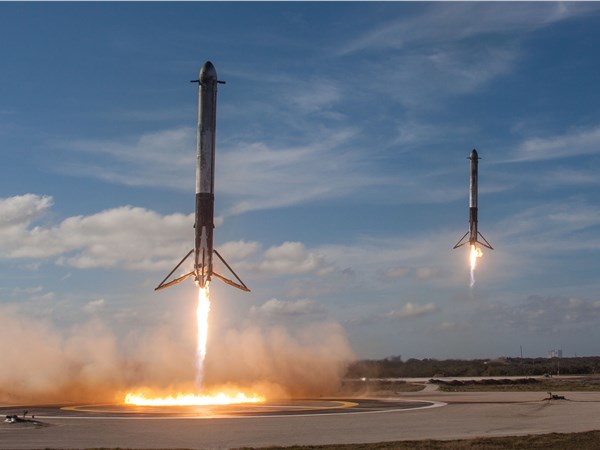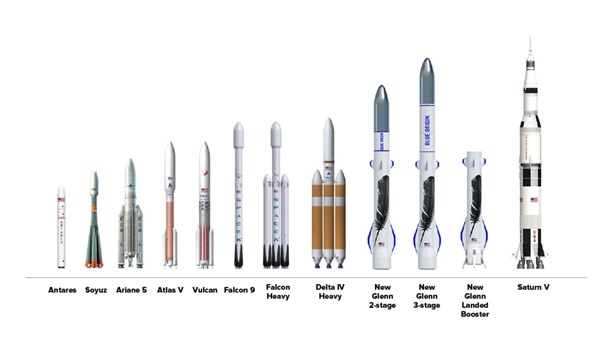Falcon Heavy is just the beginning
The successful launch of the Falcon Heavy rocket by SpaceX marks a new milestone in the private space race — the ability to take larger payloads further.

SpaceX Falcon Heavy rocket launch, Feb. 6, 2018.
On Tuesday, Feb. 6, the SpaceX Falcon Heavy rocket launched itself into space for the first time ever, marking a new milestone in the private space race era — the successful deployment of a “heavy” class rocket capable of delivering a payload of up to 63.8 MT to low Earth orbit (LEO). Not since the Saturn V in the 1970s has the world launched a rocket of such size and capability.
It was not difficult, watching video of the Falcon Heavy launch, to be impressed not just by the launch itself — and subsequent delivery of the Tesla Roadster cargo into space — but also the recovery of the two boosters, which landed simultaneously on adjacent landing pads near the Florida coast.

Falcon Heavy booster recovery.
And if you are involved at all in composites manufacturing, I am sure you could not help but think about the design, engineering and manufacturing of carbon fiber composite structures embodied in the entire Falcon Heavy rocket.
As impressive as the flight was, however, it’s worth keeping in mind that the Falcon Heavy is designed not just for delivering cargo to LEO, but much further. SpaceX’ Elon Musk has Mars in mind, as do others. Indeed, the Falcon Heavy looks to be just one of many burgeoning heavy lift vehicles that will vie for the chance to help take people farther from Earth than they have ever traveled.

Jeff Bezos’ Blue Origin is working on two versions of the New Glenn, a two-stage and three-stage heavy lift rocket that will offer LEO payload capacity of 45 MT. Like the Falcon Heavy, the New Glenn features a recoverable/reusable launcher. Boeing is working on the Space Launch System (SLC), which will come in two configurations to offer LEO payloads of 70 MT and 130 MT. United Launch Alliance (ULA) already has the Delta IV Heavy, which has been in operation since 2002 and can deliver up to 28.4 MT of cargo into LEO. ULA is also working on the Vulcan, which will be able to deliver up to 23 MT past LEO and into geosynchronous orbit (GTO). The Falcon Heavy’s GTO payload capacity, for comparison, is 26.7 MT.
It appears that we are entering a new heavy lift era in private rocket development, and the composites industry looks to be a major player. Stay turned.
Related Content
-
One-piece, one-shot, 17-meter wing spar for high-rate aircraft manufacture
GKN Aerospace has spent the last five years developing materials strategies and resin transfer molding (RTM) for an aircraft trailing edge wing spar for the Airbus Wing of Tomorrow program.
-
Thermoplastic composites welding advances for more sustainable airframes
Multiple demonstrators help various welding technologies approach TRL 6 in the quest for lighter weight, lower cost.
-
Carbon fiber in pressure vessels for hydrogen
The emerging H2 economy drives tank development for aircraft, ships and gas transport.
















